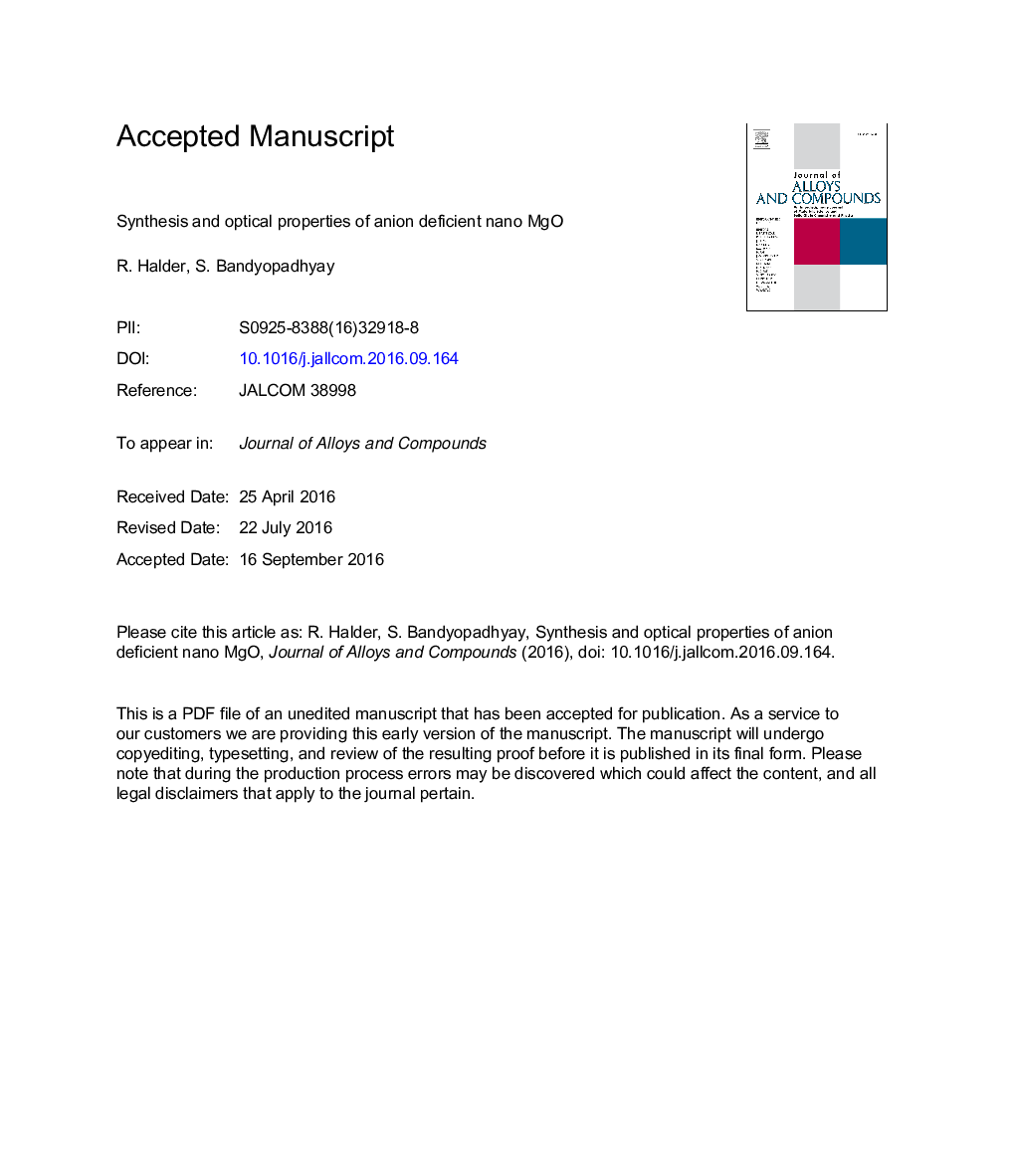| Article ID | Journal | Published Year | Pages | File Type |
|---|---|---|---|---|
| 5461040 | Journal of Alloys and Compounds | 2017 | 25 Pages |
Abstract
Nanocrystalline MgO powder was synthesized via modified organic gel combustion route using Urea-Formaldehyde for the first time as fuel. The formation reaction is explained through DTA-TGA. The phase formation (Rietveld refined XRD, FTIR) and the inherent powder characteristics were analyzed in terms of particle characteristics (FESEM, HRTEM, NIR-absorption), light absorption behaviour (UV-Vis spectroscopy) and photoluminescence properties (PL-spectroscopy). The general occurrence in the form of large porous nano spheres constituted by very fine crystallites of the order of 4-25Â nm with enlarged cell parameters of pure MgO were obtained. Enhanced reactivity of the produced powder is expected to originate out of the exposed polarised surfaces of these fine grains with capability to provide high energy binding sites. The non equilibrium condition prevalent under extreme speedy kinetics of the formation reaction introduced quantum subsystems in the lattice. Photoconversion between different optical centres greatly influenced the luminescence properties yielding a broad emission spectrum. The spectrum is intense because of high concentration of anion deficiency with an obvious blue shift due to lower concentration of Hâ traps in it. Promotion of electron in the introduced quantum subsystems under excitation provided intraband energy transfer between optical centres below the conduction band that lowered down the band gap value to 4.45Â eV. Spark plasma sintering was employed for powder densification. The ultimate product constituted by nano grains of size corresponding to 200-500Â nm exhibits â¼80% transmittance in IR region.
Related Topics
Physical Sciences and Engineering
Materials Science
Metals and Alloys
Authors
R. Halder, S. Bandyopadhyay,
